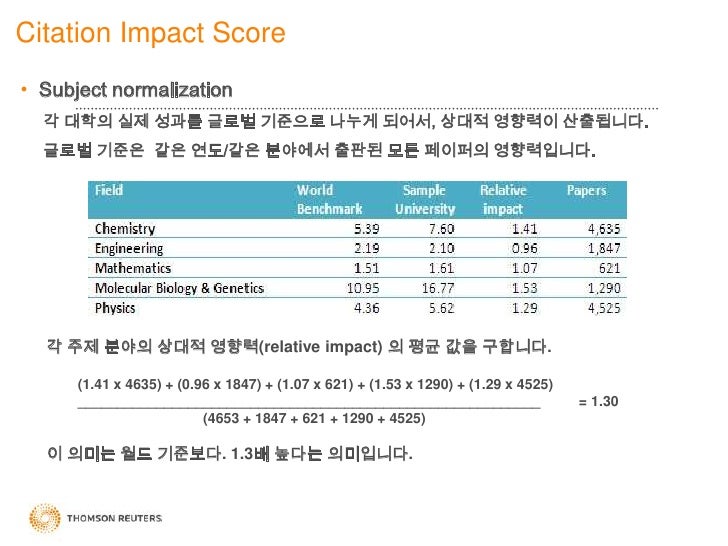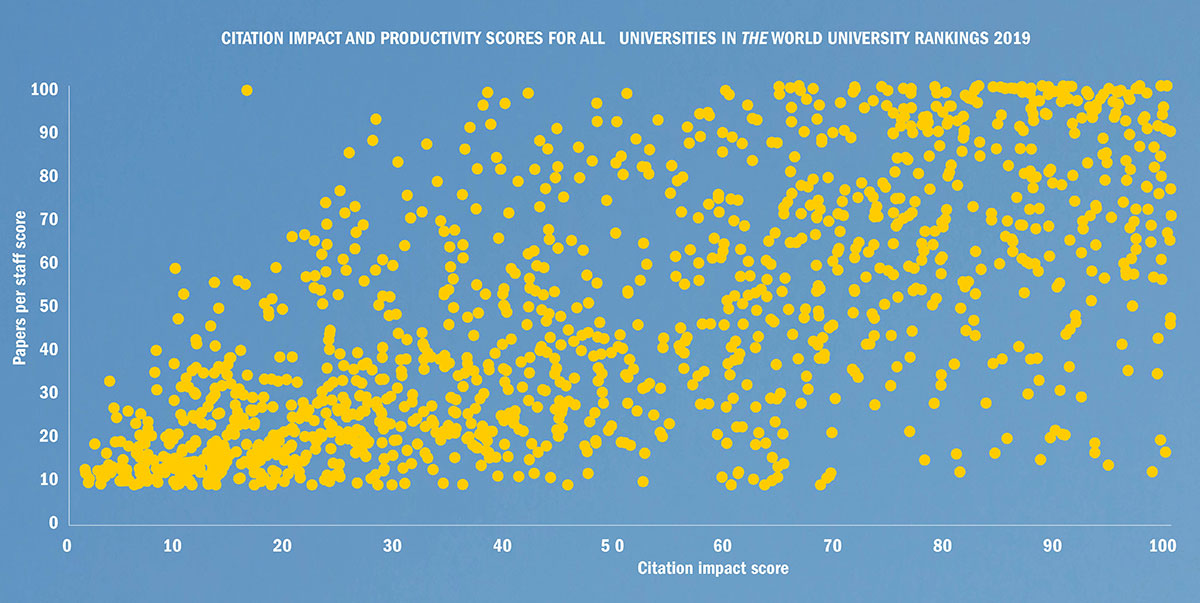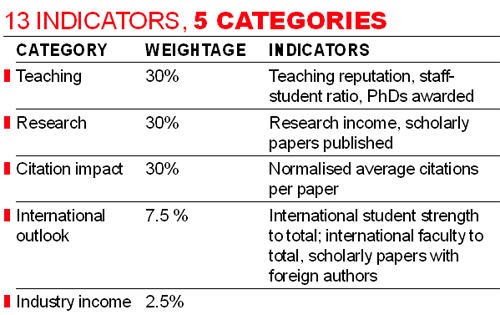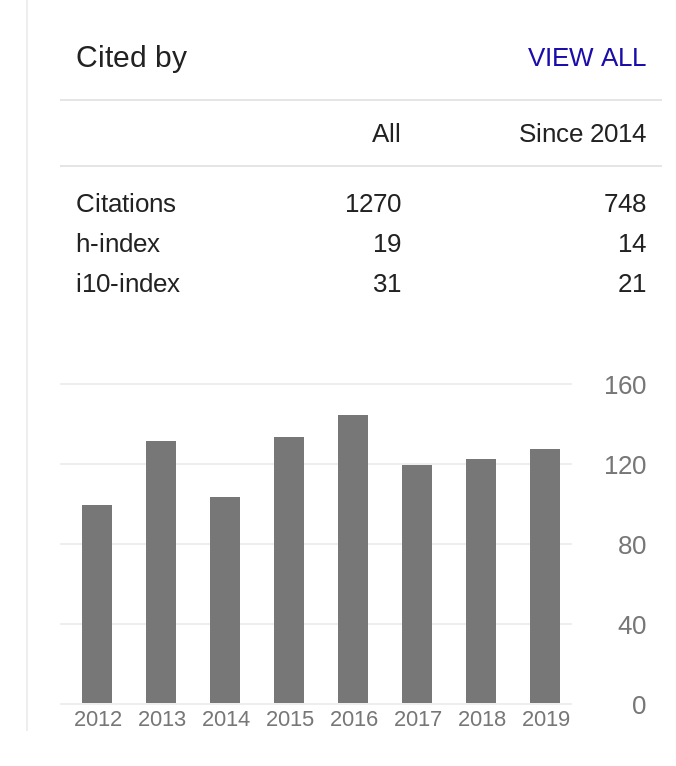Citation impact score information
Home » Trend » Citation impact score informationYour Citation impact score images are ready in this website. Citation impact score are a topic that is being searched for and liked by netizens now. You can Find and Download the Citation impact score files here. Download all royalty-free photos.
If you’re looking for citation impact score images information linked to the citation impact score keyword, you have pay a visit to the right site. Our site always provides you with hints for refferencing the highest quality video and picture content, please kindly hunt and find more informative video articles and images that fit your interests.
Citation Impact Score. The process whereby the impact or quality of an article is assessed by counting the number of times other authors mention it in their work. Citescore is a way of measuring the citation impact of journals and is based on the average citations received per document. Impact factor determines the ranking of a journal in that specific category, which can be found in the journal citation reports (jcr). Citation impact is a measure of how many times an academic journal article or book or author is cited by other articles, books or authors.
 Citation Impact Scores from Clarivate Analytics� InCite From researchgate.net
Citation Impact Scores from Clarivate Analytics� InCite From researchgate.net
Source normalized impact per paper (snip) measures contextual citation impact by weighting citations based on the total number of citations in a subject field. The journal impact factor (jif) is defined as all citations to the journal in the current jcr year to items published in the previous two years, divided by the total number of scholarly items (these comprise articles, reviews, and proceedings papers) published in the journal in the previous two years. This offers a more robust and accurate indication of a journal’s impact. The process whereby the impact or quality of an article is assessed by counting the number of times other authors mention it in their work. exactly 1 means that the output performs just as expected for the global average. As far as we know there is nothing like citation score.
Source normalized impact per paper (snip) measures contextual citation impact by weighting citations based on the total number of citations in a subject field.
Citation analysis invovles counting the number of times an article is cited by other works to measure the impact of a publicaton or author. This offers a more robust and accurate indication of a journal’s impact. Cite score is from scopus and impact factor is from data of web of science but cite score measuring on 3 years data while impact factor is from two years data. Source normalized impact per paper (snip) measures contextual citation impact by weighting citations based on the total number of citations in a subject field. See all faqs about citescore and its derivative metrics Scopus is considered by many to be the primary competitor to the web of science database for citation analysis and journal ranking statistics.
 Source: researchgate.net
Source: researchgate.net
Cite score is from scopus and impact factor is from data of web of science but cite score measuring on 3 years data while impact factor is from two years data. The journal impact factor (jif) is defined as all citations to the journal in the current jcr year to items published in the previous two years, divided by the total number of scholarly items (these comprise articles, reviews, and proceedings papers) published in the journal in the previous two years. A journal’s citescore for year x is the sum of all citations indexed in scopus from year x referring International scientific journal & country ranking. As far as we know there is nothing like citation score.
 Source: researchgate.net
Source: researchgate.net
In most fields, the impact factor of 10 or greater is considered an excellent score while 3 is flagged as good and the average score is less than 1. The impact score (is) is a measure of the yearly average number of citations to recent articles published in that journal. The process whereby the impact or quality of an article is assessed by counting the number of times other authors mention it in their work. Citescore metrics calculate the citations from all documents in year one to all documents published in the prior three years for a title. The impact of a single citation is given higher value in subject areas where citations are less likely, and vice versa.
 Source: researchgate.net
Source: researchgate.net
exactly 1 means that the output performs just as expected for the global average. As an example, to calculate a 2015 value, citescore counts the citations received in 2015 to documents published in 2012, 2013 or 2014. Citation indexes also provide various indicators to evaluate the author impact in a subject. The impact of a single citation is given higher value in subject areas where citations are less likely, and vice versa. It is often used to compare journals of the same category.
 Source: researchgate.net
Source: researchgate.net
[1] [2] [3] [4] [5] citation counts are interpreted as measures of the impact or influence of academic work and have given rise to the field of bibliometrics or scientometrics , [6] [7] specializing in the study of patterns of academic impact. It is often used to compare journals of the same category. Cite score is from scopus and impact factor is from data of web of science but cite score measuring on 3 years data while impact factor is from two years data. Source normalized impact per paper (snip) measures contextual citation impact by weighting citations based on the total number of citations in a subject field. In december 2016, elsevier launched a new journal metric, citescore, that takes direct aim at the hegemony of the impact factor, a product of clarivate analytics (formerly part of thomson reuters.) the two companies already have competing bibliographical citation databases in scopus (elsevier) and the web of science (clarivate).
 Source: slideshare.net
Source: slideshare.net
Impact factor = # of citations to all items published in that journal in the past two years (divided by) # of articles and reviews published over. Citation indexes also provide various indicators to evaluate the author impact in a subject. Impact factor = # of citations to all items published in that journal in the past two years (divided by) # of articles and reviews published over. This section provides information about how citescore is calculated and information about citescore tracker. As an example, to calculate a 2015 value, citescore counts the citations received in 2015 to documents published in 2012, 2013 or 2014.
 Source: researchgate.net
Source: researchgate.net
A journal’s citescore for year x is the sum of all citations indexed in scopus from year x referring Impact factor = # of citations to all items published in that journal in the past two years (divided by) # of articles and reviews published over. Source normalized impact per paper (snip) measures contextual citation impact by weighting citations based on the total number of citations in a subject field. This is where things start getting tricky! However, these are total citation measures and do.
 Source: researchgate.net
Source: researchgate.net
[1] [2] [3] [4] [5] citation counts are interpreted as measures of the impact or influence of academic work and have given rise to the field of bibliometrics or scientometrics , [6] [7] specializing in the study of patterns of academic impact. The impact factor (if) or journal impact factor (jif) of an academic journal is a scientometric index calculated by clarivate that reflects the yearly mean number of citations of articles published in the last two years in a given journal, as indexed by clarivate�s web of science. Cite score is from scopus and impact factor is from data of web of science but cite score measuring on 3 years data while impact factor is from two years data. A journal’s citescore for year x is the sum of all citations indexed in scopus from year x referring Only open access journals only scielo journals only wos journals
 Source: factcards.nl
Source: factcards.nl
Citescore metrics calculate the citations from all documents in year one to all documents published in the prior three years for a title. However, the impact factor is best read in terms of subject matter in the form of the 27 research disciplines identified in the journalcitation reports. Cite score is from scopus and impact factor is from data of web of science but cite score measuring on 3 years data while impact factor is from two years data. As an example, to calculate a 2015 value, citescore counts the citations received in 2015 to documents published in 2012, 2013 or 2014. Citation indexes also provide various indicators to evaluate the author impact in a subject.
 Source: timeshighereducation.com
Source: timeshighereducation.com
The impact score (is) is a measure of the yearly average number of citations to recent articles published in that journal. The process whereby the impact or quality of an article is assessed by counting the number of times other authors mention it in their work. According to journal citation reports (jcr), an impact factor is a ratio focusing on original research. There is the citescore, which is a metric to help you track journal performance). However, the impact factor is best read in terms of subject matter in the form of the 27 research disciplines identified in the journalcitation reports.
 Source: libguides.marquette.edu
Source: libguides.marquette.edu
However, these are total citation measures and do. According to journal citation reports (jcr), an impact factor is a ratio focusing on original research. Citescore metrics include 8 indicators that monitor the citation impact. The impact factor (if) is the average number of citations received for each published article in that particular year. This offers a more robust and accurate indication of a journal’s impact.
 Source: researchgate.net
Source: researchgate.net
The impact factor (if) is the average number of citations received for each published article in that particular year. The impact score (is) is a measure of the yearly average number of citations to recent articles published in that journal. A journal’s citescore for year x is the sum of all citations indexed in scopus from year x referring The impact factor (if) or journal impact factor (jif) of an academic journal is a scientometric index calculated by clarivate that reflects the yearly mean number of citations of articles published in the last two years in a given journal, as indexed by clarivate�s web of science. Citation counts, citations 2011 jcr/wos, and citations 2011 scopus, provide information on impact through raw citation counts [21,25, 26].
 Source: researchgate.net
Source: researchgate.net
In december 2016, elsevier launched a new journal metric, citescore, that takes direct aim at the hegemony of the impact factor, a product of clarivate analytics (formerly part of thomson reuters.) the two companies already have competing bibliographical citation databases in scopus (elsevier) and the web of science (clarivate). Citescore metrics include 8 indicators that monitor the citation impact. Citation counts, citations 2011 jcr/wos, and citations 2011 scopus, provide information on impact through raw citation counts [21,25, 26]. Impact factor determines the ranking of a journal in that specific category, which can be found in the journal citation reports (jcr). The impact score (is) is a measure of the yearly average number of citations to recent articles published in that journal.

Impact factor determines the ranking of a journal in that specific category, which can be found in the journal citation reports (jcr). The impact score (is) is a measure of the yearly average number of citations to recent articles published in that journal. [1] [2] [3] [4] [5] citation counts are interpreted as measures of the impact or influence of academic work and have given rise to the field of bibliometrics or scientometrics , [6] [7] specializing in the study of patterns of academic impact. Higher the impact score, higher is the ranking of the journal. The impact factor (if) is the average number of citations received for each published article in that particular year.
 Source: libguides.unimap.edu.my
Source: libguides.unimap.edu.my
However, the impact factor is best read in terms of subject matter in the form of the 27 research disciplines identified in the journalcitation reports. The impact factor (if) is the average number of citations received for each published article in that particular year. See all faqs about citescore and its derivative metrics This is where things start getting tricky! Citescore metrics include 8 indicators that monitor the citation impact.
 Source: researchgate.net
Source: researchgate.net
The impact score (is), also denoted as journal impact score (jis), of an academic journal is a measure of the yearly average number of citations to recent articles published in that journal. The impact factor (if) is the average number of citations received for each published article in that particular year. Citation counts, citations 2011 jcr/wos, and citations 2011 scopus, provide information on impact through raw citation counts [21,25, 26]. As far as we know there is nothing like citation score. Higher the impact score, higher is the ranking of the journal.
 Source: tribuneindia.com
Source: tribuneindia.com
The impact factor (if) is the average number of citations received for each published article in that particular year. The impact of a single citation is given higher value in subject areas where citations are less likely, and vice versa. Citation counts, citations 2011 jcr/wos, and citations 2011 scopus, provide information on impact through raw citation counts [21,25, 26]. A journal’s citescore for year x is the sum of all citations indexed in scopus from year x referring The impact factor (if) is the average number of citations received for each published article in that particular year.
 Source: medium.com
Source: medium.com
Impact factor determines the ranking of a journal in that specific category, which can be found in the journal citation reports (jcr). However, the impact factor is best read in terms of subject matter in the form of the 27 research disciplines identified in the journalcitation reports. Higher the impact score, higher is the ranking of the journal. This offers a more robust and accurate indication of a journal’s impact. A journal’s citescore for year x is the sum of all citations indexed in scopus from year x referring
 Source: researchgate.net
Source: researchgate.net
This offers a more robust and accurate indication of a journal’s impact. As an example, to calculate a 2015 value, citescore counts the citations received in 2015 to documents published in 2012, 2013 or 2014. The impact of a single citation is given higher value in subject areas where citations are less likely, and vice versa. According to journal citation reports (jcr), an impact factor is a ratio focusing on original research. Only open access journals only scielo journals only wos journals
This site is an open community for users to do sharing their favorite wallpapers on the internet, all images or pictures in this website are for personal wallpaper use only, it is stricly prohibited to use this wallpaper for commercial purposes, if you are the author and find this image is shared without your permission, please kindly raise a DMCA report to Us.
If you find this site adventageous, please support us by sharing this posts to your own social media accounts like Facebook, Instagram and so on or you can also bookmark this blog page with the title citation impact score by using Ctrl + D for devices a laptop with a Windows operating system or Command + D for laptops with an Apple operating system. If you use a smartphone, you can also use the drawer menu of the browser you are using. Whether it’s a Windows, Mac, iOS or Android operating system, you will still be able to bookmark this website.